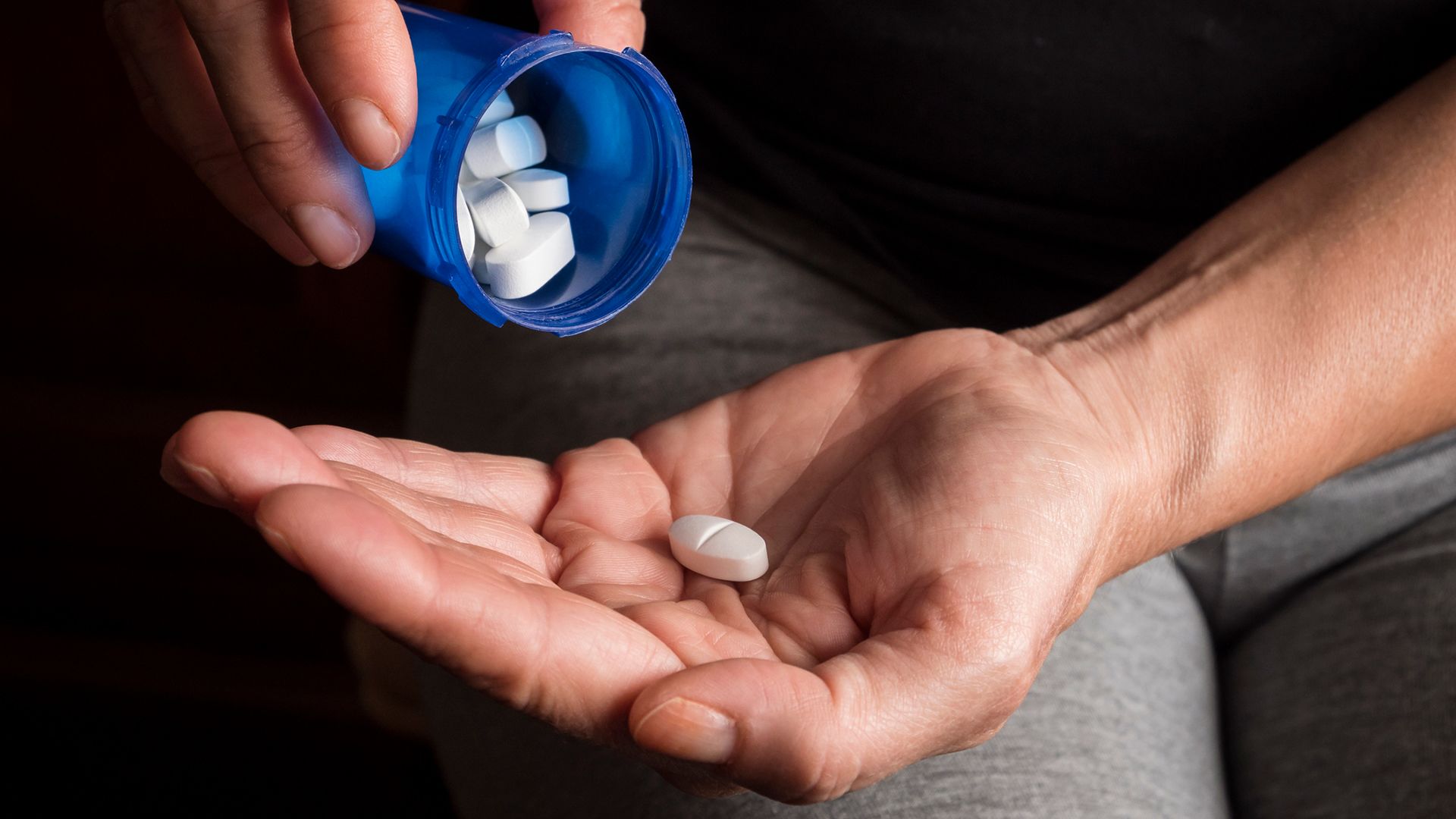Updated on March 22, 2024
Gender-affirming hormone therapy (GAHT) is one of a number of medical interventions that someone who is transgender, gender nonconforming, or nonbinary might seek. It involves taking either feminizing or masculinizing hormones, typically forms of estrogen or testosterone.
GAHT (sometimes referred to as hormone replacement therapy, or HRT) can be a helpful option—and even a life-saving treatment—for anyone experiencing gender dysphoria and/or social dysphoria, says Lauren Radziejewski, DNP, ANP-BC, a nurse practitioner based in New York City who specializes in the care of transgender people.
Gender dysphoria refers to the distress and discomfort one might experience when they feel their gender identity doesn’t align with some or all of their physical or physiological characteristics. (Many, but not all, transgender and gender nonconforming people experience gender dysphoria.) Social dysphoria is the feeling some trans people get when others do not treat them as the correct gender.
“When people receive gender-affirming care, specifically hormone therapy, and are allowed to pursue life in their identified gender, they report overall improvement in gender dysphoria,” Radziejewski says. “This translates to a much lower rate of hospitalizations, suicidality, depression, and actual suicide.” (If you experience any suicidal thoughts, call, text, or chat 988 to the 988 Suicide & Crisis Lifeline.)
For many trans and nonbinary people, starting hormone therapy is a relief. Tears of joy are common in the office of Jennifer Aldrich, MD, an associate professor of medicine at the Lewis Katz School of Medicine at Temple University in Philadelphia, who focuses on transgender and nonbinary health. Providing GAHT is “one of the most rewarding things in medicine,” she says.
What are the goals of taking masculinizing hormone therapy?
The hormone prescribed for masculinizing hormone therapy is generally a type of testosterone, which can be taken in several forms. These may include injections placed under the skin or into the muscles every one or two weeks, or topical applications like gel, cream, or a patch placed on the skin.
In general, the goal is to gain characteristics associated with testosterone, such as growing facial hair, while suppressing those associated with estrogen, like the distribution of facial fat that gives a softer appearance. Your provider will work with you to establish your personal goals and to help set realistic expectations.
GAHT typically starts slowly with a low dose before it’s increased as needed to achieve desired effects. You might be able to stop taking testosterone once you are happy with the results. Some new traits—such as facial and body hair and a deepened voice—likely won’t disappear when you stop taking hormones.
What physical, sexual, and reproductive changes can I expect?
People taking masculinizing hormones can typically expect to experience the following:
- A deepened voice: Testosterone almost always causes voice changes, Radziejewski says, because it makes vocal cords thicken. Voice changes will begin just a few weeks after starting testosterone.
- Growth in body and facial hair: Someone on testosterone can expect body and facial hair to grow similarly to how cisgender men in their families grow hair, Radziejewski says. (Cisgender refers to a person whose gender identity corresponds with the sex they were identified as having at birth.)
- Redistribution of body fat: Someone on testosterone will likely see some shifting in existing fat away from the hips and butt, Radziejewski says, and toward more conventionally masculine areas, such as around the belly. Subcutaneous fat (that kind that lies just beneath the skin) will also shift around the face, lending a more angular appearance.
- Increased muscle mass: Many people who take testosterone will notice increased muscle mass and strength.
- Change in sweat and odor patterns: You’re likely to start perspiring (sweating) more and there might be a change in the smell of your sweat and urine.
- Thinning hair along the temples and forehead: As body and facial hair grow, head hair will start to thin in more masculine patterns, with thinner hair along the temples and forehead. People who have a family history of male-pattern baldness will likely also start losing hair.
- An enlarged clitoris: “Testosterone will lead to what we call ‘bottom growth,’” Dr. Aldrich says. This refers to an enlargement of the clitoris, which she says is often a desired outcome. Many of Radziejewski’s patients have said that they’re much more sensitive to erotic touch following hormones, but the experience is very subjective and personal.
- Increased and changing libido: “With testosterone, the libido often increases,” Aldrich says, and some people may experience an increased interest in sex. Your orgasms may also feel different and more intense, with a greater focus around your genitals as opposed to a full body experience. Some people may also find that their sexual interests and attractions change. If you have any concerns about these changes, check in with your healthcare provider (HCP).
- Changes in menstrual bleeding: At first, someone taking testosterone may notice lighter, shorter periods that come later and less frequently than usual. For most people, periods will completely stop. If your periods don't stop while taking testosterone (but you would like them to stop), HCPs can prescribe other ways to suppress menstruation. These may include hormonal birth control, Radziejewski says. It’s important to note that testosterone does not make it impossible to get pregnant. This is worth considering for anyone on testosterone having sex that could result in pregnancy.
Are there any emotional changes?
Research suggests that gender-affirming hormone therapy is associated with improved quality of life and decreased anxiety and depression.
“I had a patient tell me once, ‘Wow, now I can just be anxious about normal things,’” Aldrich says. “He could be anxious about whether or not the car is going to run out of gas or if it’s going to rain on Saturday.”
Some people on masculinizing hormone therapy might find an improvement in mood, due to alleviation of dysphoria, while others might find themselves more emotional, with more mood changes or even aggression.
Is one’s age a factor?
Once someone has undergone puberty in their sex assigned at birth, those physical changes become harder to reverse or alter with GAHT. So, for those who start masculinizing hormone therapy later in life, they are less likely to see significant physical changes from testosterone, although there will be some.
The most significant effects are seen in people who have used puberty blockers to stop or halt puberty of their sex assigned at birth and then, through GAHT, to go through puberty in their affirmed gender.
What are the possible side effects and risks?
“Testosterone, as far as we know, is safe,” Radziejewski says. That said, many people taking testosterone may develop oilier skin that might lead to acne.
It’s also important to note that taking masculinizing hormones can lead to an increased risk of cardiovascular (heart-related) complications. Your HCP may wish to monitor your red blood cell counts because testosterone can potentially cause blood clots, although it’s very rare, Aldrich says.
Some people on masculinizing hormones may also experience an increase in mood swings or a worsening of an underlying mental health diagnosis. But for those who have experienced significant gender dysphoria, GAHT can help alleviate the distress it causes.
It’s also possible that taking testosterone can affect fertility, especially for someone who has been on testosterone for a long time. If you are unsure about your future plans for having children, it’s worth discussing with your HCP whether you may want to consider freezing your eggs before starting GAHT. It’s also important to discuss contraception with your HCP if you’re having sex that could result in unintended pregnancy. GAHT should not be used for pregnancy prevention.
How can I access masculinizing hormone therapy?
If you’re interested in starting masculinizing hormone therapy, start with a trusted HCP who is comfortable prescribing GAHT. This may be a primary care provider, an endocrinologist, gynecologist, or other specialist.
If you don’t see a provider regularly, Radziejewski recommends checking out your local LGBTQIA+ center, if there’s one in your area, or searching for providers through organizations such as TransPulse and OutCare. Planned Parenthood also offers GAHT.
It can be risky to obtain hormones outside of conventional channels, so make sure that you are working with a licensed HCP to get the affirming, culturally competent care you need.






